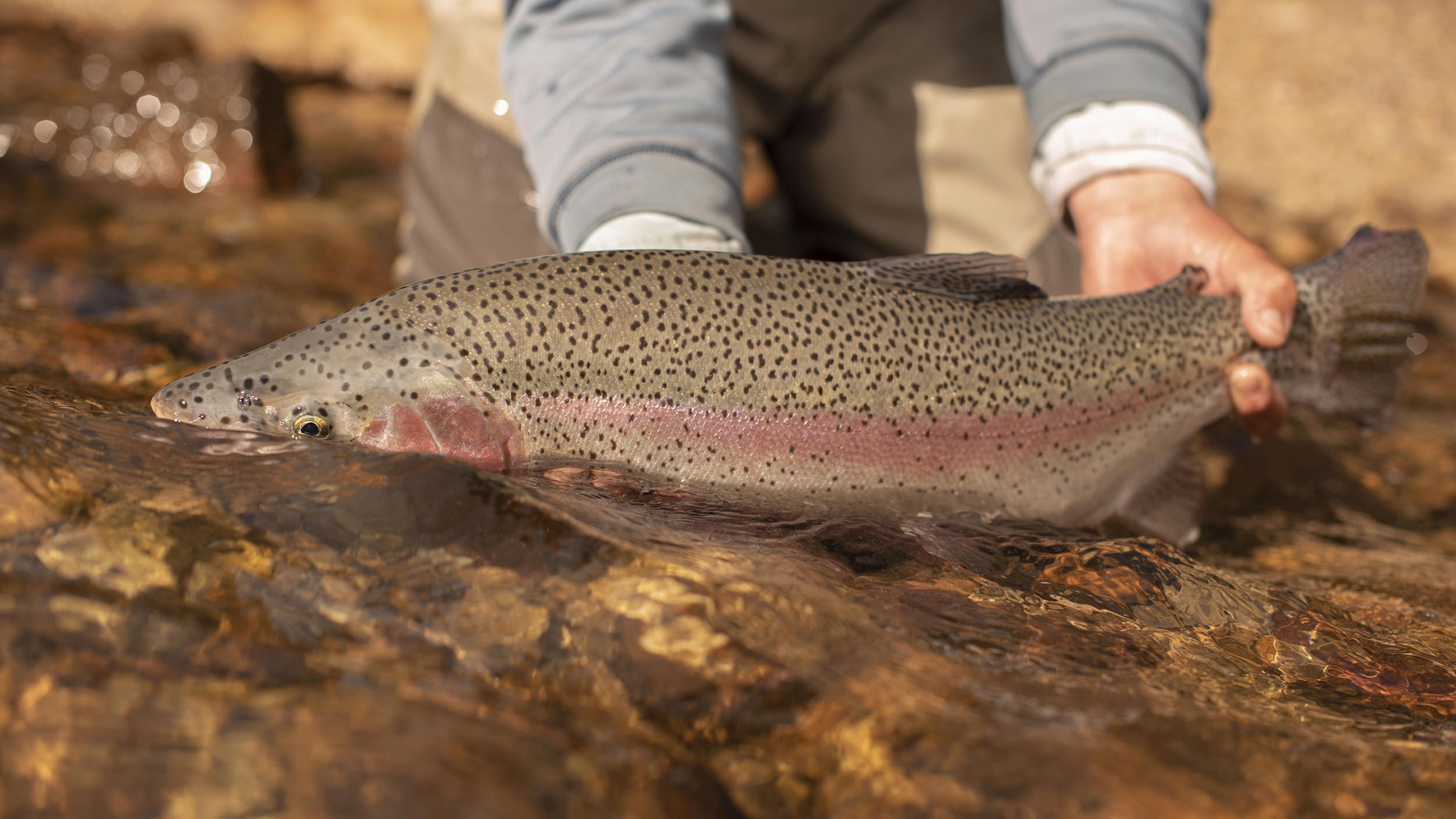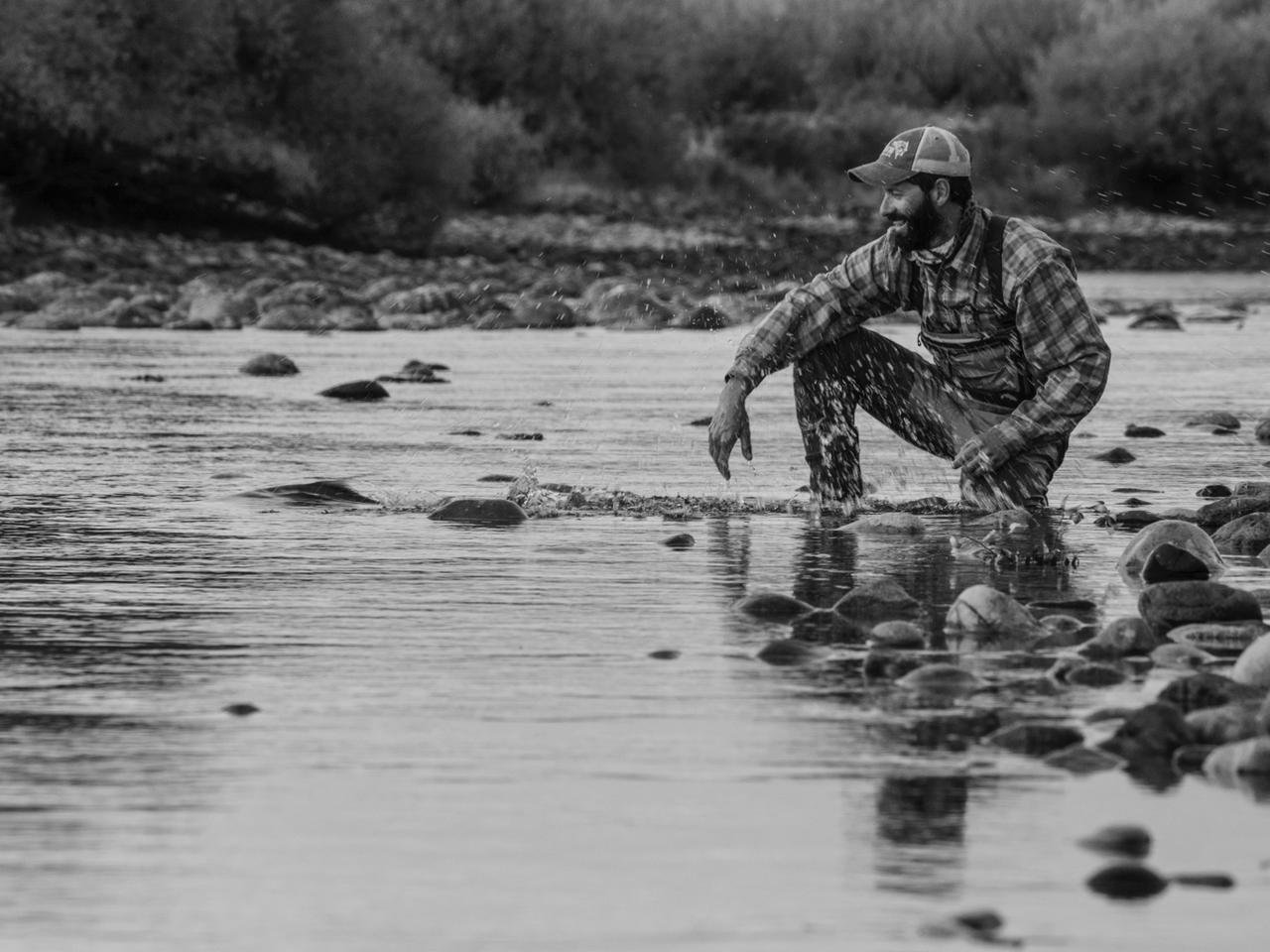Good Practices For Fly Fishing
By Marcelo Widmann
We at El Encuentro share your goal of having a healthy and sustainable fishery. Here are the practices that we will be following when we are together on our waters in Patagonia.
FLY FISHING TACKLE
Successful catch-and-release fishing depends on using appropriate fishing methods and gear for the size and species of fish you’re pursuing. The right tools for the job decrease the fish’s stress and increase its chance of survival after release. El Encuentro can set you up with the appropriate rods, reels, and lines if you do not want to travel with your own equipment.
Fly Rod, Reel, and Line: Use a fly rod according to the fish size you are targeting, with sufficient power and strength to land the fish quickly.
Flies: El Encuentro only uses single and barbless fly hooks!
Tippet: We use strong tippet for all fishing situations. This way we can avoid longer fights and minimize the chances of the fish breaking off.
CATCHING AND LANDING THE FISH
It takes time and practice to perfect the art of catching and landing the fish. We are here to give you tips any time! Here’s some advice to hone your techniques:
Be quick. A tired fish takes longer to recover. Avoid playing the fish to exhaustion and land it as quickly as possible.
Use a landing net. We always use a large landing net to reduce handling time, stress, and the potential for injury, especially for large fish that are difficult to manage. Our large framed nets are shallow and the mesh is usually made of rubber.
HANDLING YOUR FISH
We want to be sure to handle fish carefully to avoid injuries.
Keep the fish wet and calm. Wet your hands to reduce the loss of mucous tissue. Removing fish from water causes stress, suffocation, and possible internal injury.
Treat the fish gently. Avoid squeezing, which can damage internal organs and muscle tissue. Remember to avoid putting your fingers by the gills.
Provide proper support. Avoid removing fish from the support of the surrounding water any more than necessary. You will see us supporting the fish in a landing net, and/or cradling the fish gently with one hand beneath the belly right ahead of the pectoral fins and the other hand holding it from the tail near the surface of the water.
REMOVING THE HOOK
We will work quickly and calmly, keeping the fish in the water and/or holding it upside down to calm and relax the fish. This makes it easier to remove the hook.
Use the right hook release tool. Removal should be easy because we are always using barbless hooks!
Sometimes it is necessary to leave the hook. This is when the hook cannot be easily removed. Then we leave it, by cutting the line as close to the hook as possible.
TAKING A PICTURE
Before taking a picture, we will review with you how to handle the fish to minimize stress and injury. We will advise you to hold the fish firmly at the tail with one hand and cradle carefully around the pectoral fins with the other hand. Be careful not to squeeze the fish and be sure to keep your fingers out of the gills.
It’s also important to coordinate between the photographer and the angler. When the photographer is ready, the angler says, “One, two, three…” lifting the fish on three and holding it as close to the water as possible. When the photographer says, “Got it…,” the angler gently returns the fish to the water.
RELEASING YOUR FISH
We will find some slow-moving water and hold the fish underwater, in an upright position or secured in the landing net. We will also be sure that the fish is facing the current to help it ventilate before release—you should see the gills opening and closing. The fresh oxygenated water can pass gently over the gills helping the fish “catch its breath.” We let the fish fully recover before releasing it, and watching it swim away on its own.
In fast-moving water, we will move the fish to calmer water where it can recover and swim away on its own. Fast-moving or turbulent water can sweep away or injure a weakened fish. This is particularly important for fish released from a boat in midstream.
WATER CONDITIONS
Finally, we avoid fishing waters whose conditions are stressful for the fish: either because of extremely low flows and/or high water temperatures.
As we plan your days, we will always be looking for good water conditions. That way, we will be preserving fish and fishing for the future.
Tight lines!
Marcelo Widmann,
EEFF Head Guide




